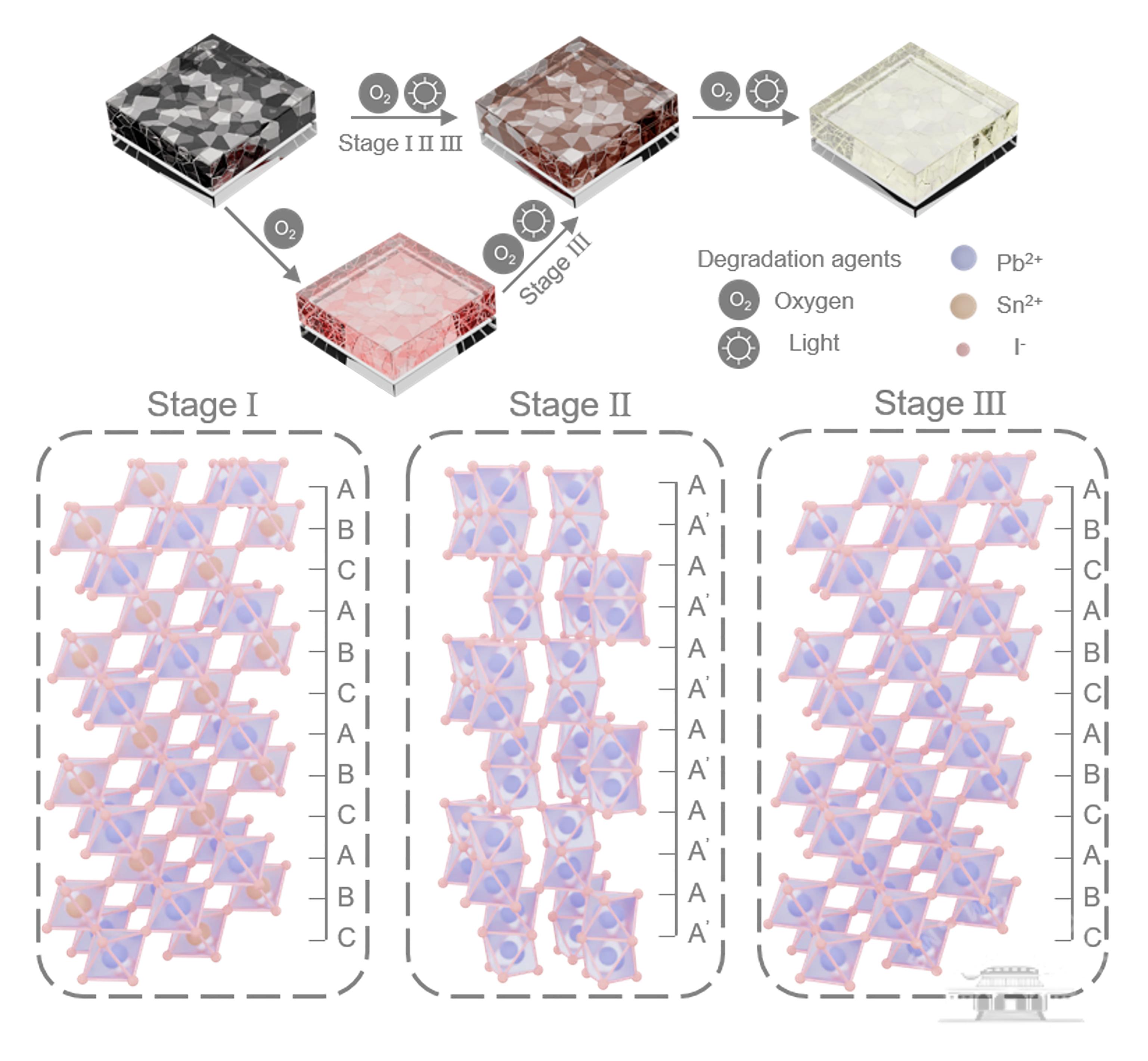The School of Physics and Technology at Wuhan University (WHU) has published significant findings on the phase reconstruction process of tin-lead perovskite solar cells in Nature Communications.

The evolution from tin-lead perovskites to a reconstruction of lead perovskites under light.
The paper, titled "Unveiling the Nexus Between Irradiation and Phase Reconstruction in Tin-Lead Perovskite Solar Cells", was co-authored by PhD students Li Wenbo and Zhou Shun, and postdoctoral researcher Li Zhe with Professor Ke Weijun, Researcher Wang Ti, and Academician Xu Hongxing serving as corresponding authors.
Tin-lead perovskite materials are highly promising for all-perovskite tandem solar cells, offering an optimal bandgap that significantly boosts power conversion efficiency. However, light-induced degradation, particularly in ambient air, remains a major obstacle to their long-term stability. Unlike single-metal perovskite materials, tin-lead perovskite degrades through distinct mechanisms, making it crucial to understand how it deteriorates under light and air exposure.
Using in-situ photoluminescence spectroscopy, the research team monitored the phase reconstruction of tin-lead perovskite under light exposure. This revealed a process driven by superoxide-induced oxidation of Sn2+ and vacancy formation. This mechanism promotes the transformation between different perovskite phases, ultimately affecting the material's stability. These phenomena were unique to tin-lead perovskite, as no such behavior was observed in pure lead or tin perovskites.
This study provides fresh insights into improving the long-term stability of all-perovskite tandem solar cells, contributing to foundational knowledge that could aid their future commercial application.
Nature Communications link: https://doi.org/10.1038/s41467-025-55814-0